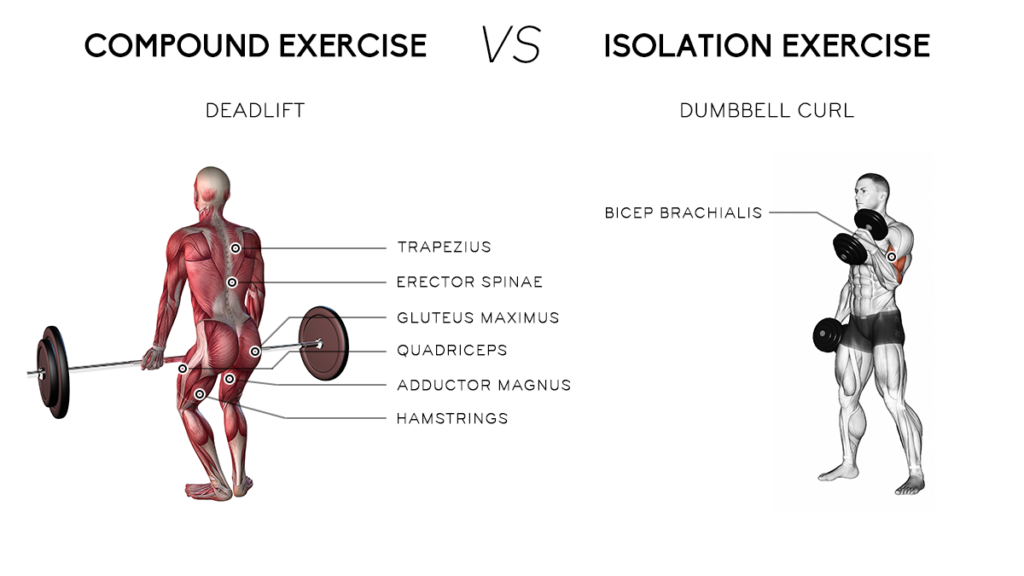What is the difference between Compound Exercises and Isolation Exercises?

Compound Exercises
A compound exercise is a multi-joint movement that works several muscles at one time – like a squat, which moves both your hip and knee joints and engages your core, glutes, quads, hamstrings and calf muscles. Isolation exercises target one specific muscle group – like a barbell curl working your biceps.
If you’re a beginner, compound exercises help you build your foundation quicker by giving you more for the time and effort you put in. They help you lift heavier loads and build more strength overall.
Benefits
1. They will save you time
- Because you able to target multiple muscle groups, there is no need for an excessive number of exercises. You're able to do just 3 different compound lifts and have a fantastic full body workout. Completing a full body workout of just isolation exercises would take much longer.
2. They will increase your functional fitness
- You’re doing compound movements every day: reaching up to get something from the top shelf, squatting down to pat your dog, etc. Adding functional exercises to your training will help you move easier through daily life. Plus, developing all-over strength will help you lift more weight in isolation.
3. Compound exercises improve intermuscular coordination
- Compound lifts require perfect timing of multiple muscles around a joint or joints. Compound exercises such as squats, lunges or steps that move the hips in all three planes can improve how all of the muscles work together to produce and control force. This benefit shows through injury inhibition and also falls prevention as we start to age.
Isolation Exercises
Isolation exercises still have an important part to play in a well-balanced muscle-building regimen.
Benefits
1. They help target spots you might have missed.
- Some muscles need isolated exercises. For example, the bicep is used in a lot of pulling movements – think rows and pull-ups – but as a secondary or supporting muscle rather than the primary one. There isn't a compound exercise that can really target the bicep on its own.
2. They will keep you active all over
- If injury strikes or your muscles need time to recover from a tough workout, isolation exercises allow you to work on individual muscles while avoiding those that are overworked or injured. This is great for athletes who cannot afford to take long periods of time off training.
3. They are perfect for fixing imbalances
- Isolation training lets you zero in on a muscle and bring it up to speed. Whether you have a bigger left bicep than your right, or your back isn't symmetrical, isolation exercises can help reverse imbalances.
Lucy Ford
Personal Trainer
Lucy has a Certificate 4 in Fitness and is passionate about helping people better themselves. She believes that anyone can achieve their health and fitness goals with the help of a good trainer. Lucy is knowledgeable with flexible time slots and affordable pricing.
Lucy specialises in muscle growth and repair, fat loss, strength and conditioning, and glute growth.



